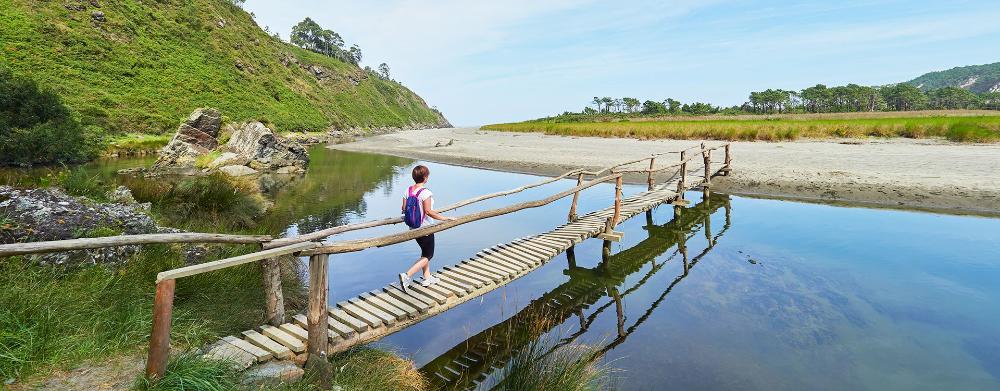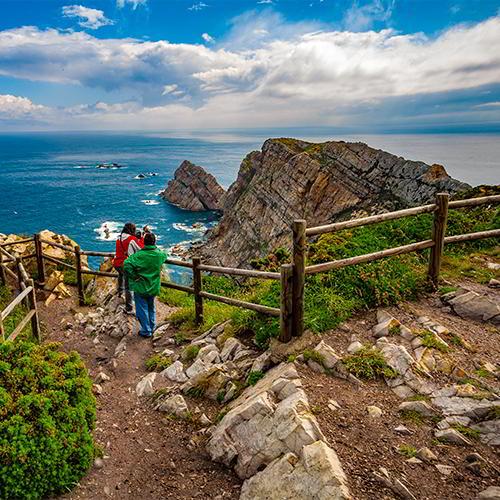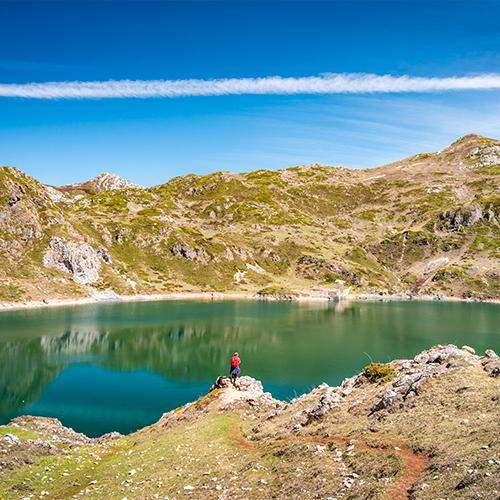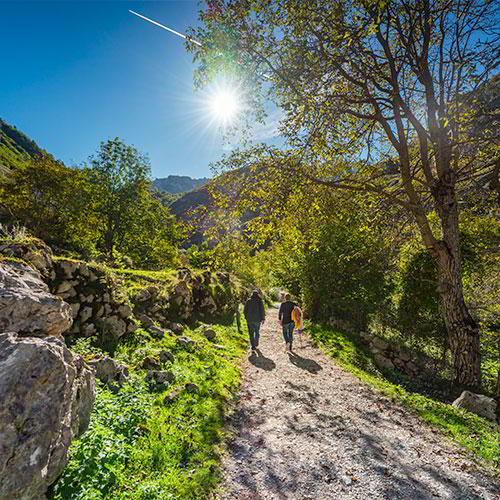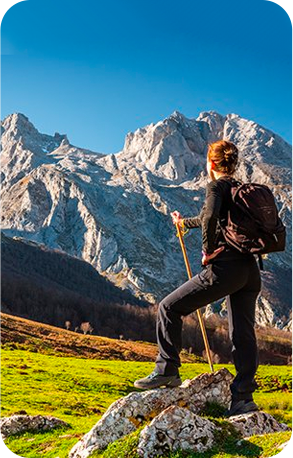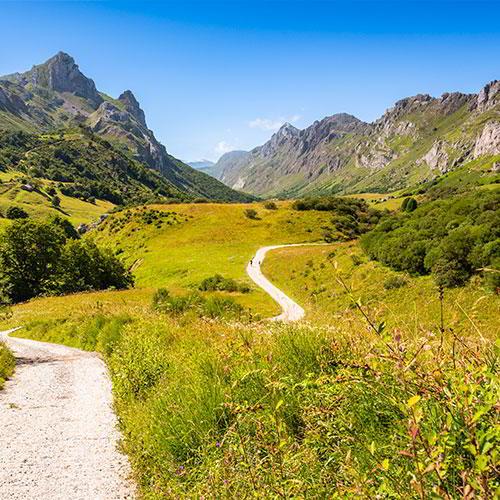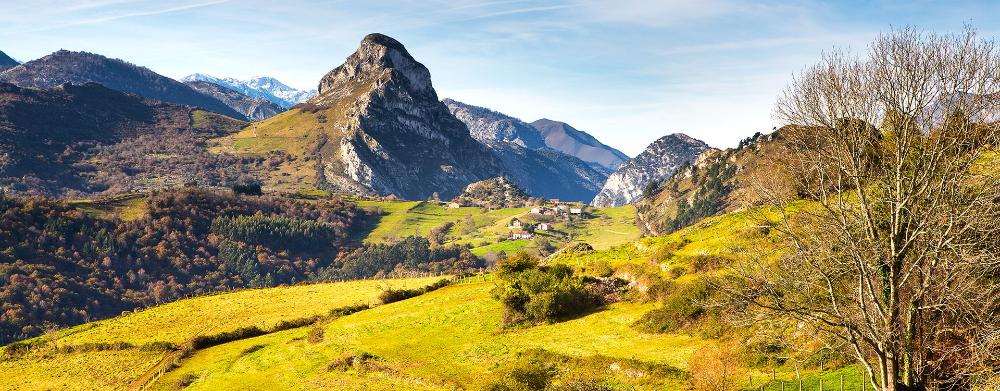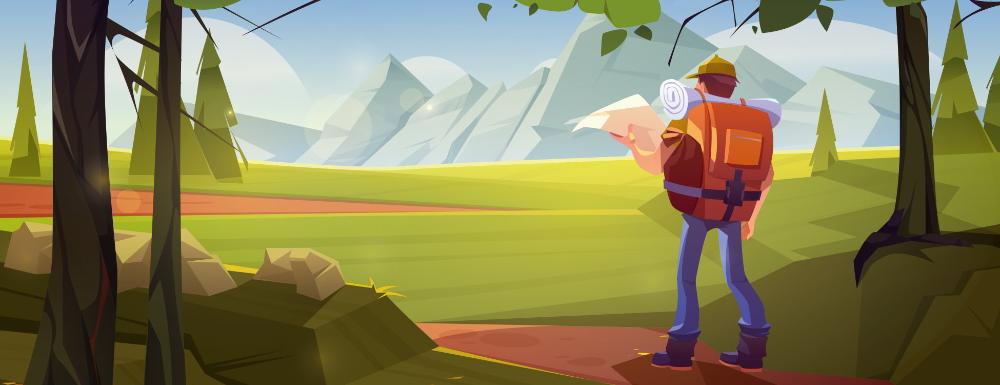The nature in Asturias is a succession of protected areas - including a national park and several natural parks - which has allowed to preserve over a third of the territory in magnificent condition and possess the best-preserved coast in Spain
Connect with nature: enjoy outdoor activities
Immerse yourself in the beauty of the protected landscapes and connect with your essence. Choose from a variety of outdoor activities: hiking, ecotourism, bird watching, and much more.
Among Biosphere Reserves, Natural Parks, National Parks, Protected Landscapes, and Natural Monuments, Asturias has over 50 areas that stand out for their landscape, geology, or botany.
The 7 Biosphere Reserves in Asturias can be the starting point for an intense exploration of nature in Asturias because each one has its own personality.
/documents/39908/67644/oso-pardo.jpg/241b827d-7315-145b-de61-0fe39a822382?t=1681806732280
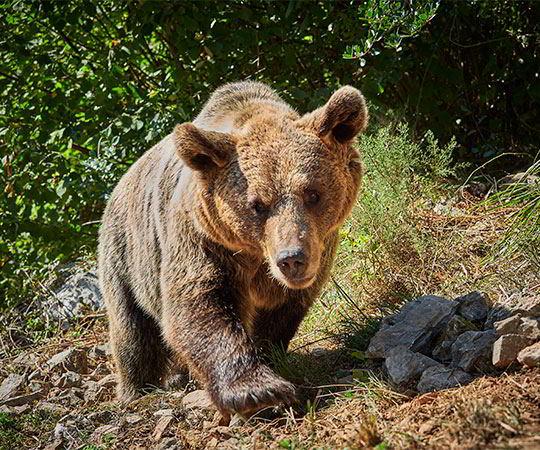
Cantabrian brown bear
The Picos de Europa National Park was the first National Park in Spain, protected since 1918. In its heart, the Picu Urriellu emerges, a real magnet for climbers, and the Lakes of Covadonga unfold.
The Natural Park of the Sources of Narcea, Degaña and Ibias is a natural park with a totemic fauna, highlighting the Cantabrian brown bear, and where it is possible to explore the Integral Natural Reserve of Munieḷḷos Forest and the Partial Natural Reserve of Cueto de Arbas.
The Somiedo Natural Park, in addition to being a Biosphere Reserve, became the first Natural Park in Asturias (1988). Its El Valle Lake is the largest in the region, and its brañas (grazing areas in high mountains) are dotted with teitos (cabins with vegetal roofs).
/documents/39908/67644/cazo-ponga.jpg/028b9dd3-0e42-5934-6033-d08418665dfc?t=1681806745383
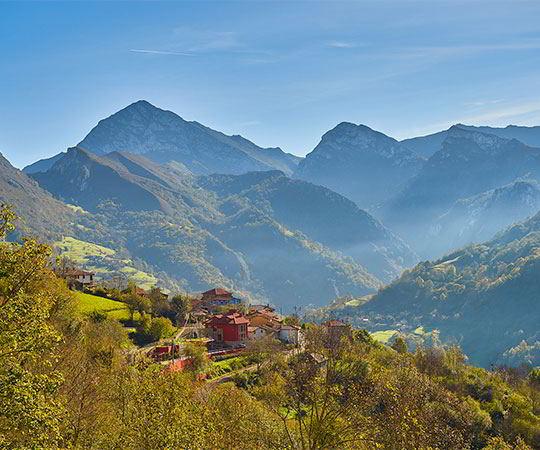
Cazu (Ponga)
The Las Ubiñas-La Mesa Natural Park contains the second largest mountain range in the region, the Peña Ubiña massif, and is full of natural monuments, such as Cueva Huerta or the Marabio passes, with their peculiar karstic complex.
The Redes Natural Park is a refuge for all the species typical of the north, from bears to capercaillies or wolves. Its complex orography, also recognized as a Natural Park, combines mountains, valleys, and limestone gorges of spectacular beauty, which can be discovered on the Alba trail or in Los Arrudos.
The Oscos-Eo Biosphere Reserve is the largest in terms of area among all the reserves in Asturias. The river Eo marks this territory from beginning to end, providing a privileged space for activities such as birdwatching.
The Ponga Natural Park is structured around gorges such as those of Ponga or Los Beyos and includes the Partial Natural Reserve of Peloño.
/documents/39908/67644/ruta-tabayon-mongallu.jpg/6d251507-5a3d-56fd-5a82-650e6731deb1?t=1681805165983
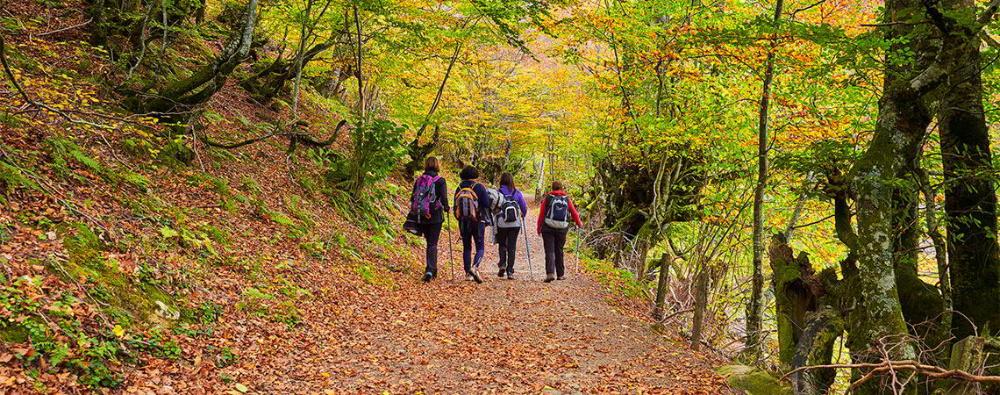
Hiking in Asturias is possibly the best way to admire these lush corners.
Asturias offers routes accessible to all fitness levels and preferences. It is also not necessary to park the car. The regional road network allows for combining visits and planning unforgettable excursions.
/documents/39908/67644/ecoturismo.jpg/9ae166ca-9122-4823-afec-0c36f181b737?t=1681806713120
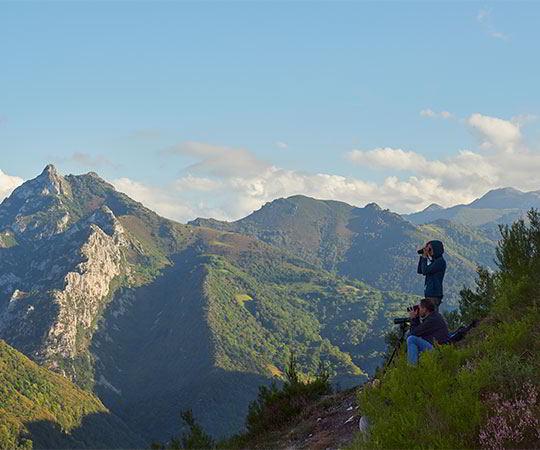
Another option is cycling along the signposted greenways or exploring some of the paths that the gigantic dinosaurs once followed, tracing their footprints engraved in stone.
There are also thematic experiences tailored to the traveler's preferences, depending on the time of year. Wildlife watching tourism has opened a new door to these experiences: joining an ornithological route, following the trail of bears, tasting nature through plant collection excursions used in cooking workshops, or traversing the shepherd's huts with eyes set on the sky to catch a glimpse of the flight of the reintroduced bearded vultures in the Picos de Europa. This is how one experiences a passion for nature firsthand.


